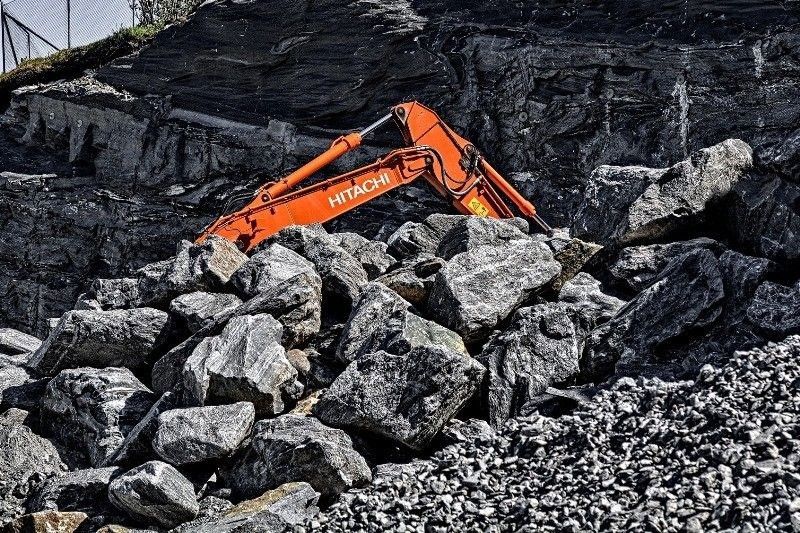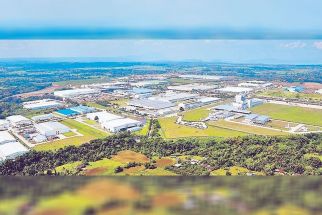Mining sector to help economy recover

Yearender
MANILA, Philippines — The COVID-19 pandemic has brought social and economic life to a standstill and plunged the world into a recession far worse than the global financial crisis a decade ago.
While the Philippines’ economic recovery is projected to be slower than most Asian nations due to its COVID response, the government is already counting on some industries to lead the country back to pre-pandemic levels.
The mining sector, which has been fighting for its life for years, is expected to help the Philippines get back on the growth track.
“There is a keen and renewed interest to see what it has to offer to the Philippines. Only two percent of the country’s territory is currently covered by mining contracts,” Chamber of Mines of the Philippines (COMP) executive director Ronald Recidoro said.
But for the sector to aid recovery and rebuilding efforts, several policy changes must be made.
“We have made several representations with the government in light of the pandemic. They are looking into the policies and issues that we have been raising and, hopefully, we get word from policy makers in the future,” COMP spokesperson Rocky Dimaculangan said.
To show that it really means business, the government has renegotiated the contract of Australian-Canadian firm OceanaGold, lifted the suspension of several mine sites upon thorough review, and moved toward the privatization of several state-owned mining assets to shore up revenues.
It is also considering lifting the controversial open pit ban and the moratorium on new mining projects.
Additional revenue streams
The mining industry contributes to government coffers through exports, taxes and employment.
Larry Heradez, mining tenements management division chief of the Mines and Geosciences Bureau (MGB), said the lifting of the moratorium on new mining projects would provide the government at least P20 billion in annual revenues, create 41,250 new jobs and directly benefit 800,000 individuals.
Heradez said the provision of a new mining tax regime should be amended to allow the government to grant new contracts.
In the first tranche of the tax reform program of the Duterte administration, the excise tax on mining doubled to four percent of gross output while the moratorium remains in place.
Heradez said the government would still pursue its legislative agenda in restructuring the fiscal regime by providing for revenue sharing.
The opening of more Minahang Bayan is seen providing P16 billion in annual revenues and 702,000 employment opportunities.
Minahang Bayan is a government-regulated cooperative of small-scale miners organized in a certain area or region.
The lifting of the controversial ban on open pit mining will also provide the government with some P11 billion in annual revenues, benefiting half a billion people and creating 28,500 additional jobs.
“We have recommended the lifting of the ban and promoting alternative methods for new mining applications, as far as practicable and feasible, or when particularly inapplicable, strict environmental safeguards shall be imposed,” Heradez said.
“We are also formulating appropriate measures to enhance environmental protection for the upcoming, current and post open pit mining projects,” he said.
Open-pit mining remains to be an internationally accepted method for mining and in the country, it is legal in accordance with the Mining Act of the Philippines. The Constitution even gives the state the duty to explore, develop, and utilize the country’s mineral resources.
The lifting of suspension orders against 13 mining firms under the watch of then Environment chief Gina Lopez will yield another P7.23 billion in revenues for the government, with nearly 30,000 job beneficiaries.
The fate of these mines are still hanging pending payment of penalties and compliance with the corrective measures recommended by the Mining Industry Coordinating Council.
Another potential source of government revenues is the renewal of the financial or technical assistance agreement (FTAA) of OceanaGold Philippines Inc. which can provide P2.8 billion annually and another P1.8 billion in taxes, fees and other obligations.
It is poised to employ around 10,000 workers on top of the 37,000 direct beneficiaries of the mine project.
The Office of the President has already directed the Philippine negotiation panel to start negotiating with OceanaGold on the terms and condition of its FTAA.
Apart from this, the Diwalwal Mineral Reservation Area (DMRA) can potentially provide almost 15,000 mining and small-scale mineral processing jobs and P609 million annual revenues.
River restoration through dredging and quarrying can also yield P25 billion in additional government revenue.
Global recovery for 2021
The mining industry saw global prices skyrocket this year. Gold, for one, achieved extreme heights not seen in the history of the commodity after prices reached nearly $2,000 per ounce.
In its 2021 outlook report, Fitch Solutions said miners should expect more favorable pricing next year for almost all minerals as these will be supported by broader global economic recovery as COVID-19 vaccines become more widely available.
Demand for minerals will further pick up as China’s consumption will remain strong as infrastructure projects continue to make progress, supported by its stimulus policies.
Approximately 90 percent of the country’s nickel exports goes to China.
Demand for some metals used in renewable infrastructure and electric-vehicle batteries including copper, nickel and aluminum should also expect a better 2021.
Fitch noted that mining capital expenditures would improve next year after firms postponed projects this year to focus on post-pandemic programs.
The Philippines could take advantage of better prices next year if more output can be produced.
The sector’s contribution in terms of revenues has been increasing in the last three years from P170 billion in 2017 to P179 billion in 2018 and P189 billion in 2019.
Its contribution to the overall gross domestic product, however, has remained at 0.6 percent while its share to total exports has also been stagnant at six percent over the last three years.
While the national impact of mining is small, the industry maintained that in certain regions that host large-scale mining, the impact is large in terms of regional GDP.
The metallic mining industry is also contributing to local economies and communities that host their operations including P4.7 billion in taxes and fees to local government units, P5.5 billion in environmental protection and enhancement programs, and P5.1 billion in social development projects.
Currently, there are 51 metallic operations in the country. Of these, 30 comprised nickel mines, 11 gold, four chromite and three for copper and iron.
Sleeping giant
Surigao del Norte Rep. Ace Barbers pointed out that the mining sector is the best and only solution to keep the economy going forward.
“The mining industry is a sleeping giant waiting to be tapped and harnessed and taken care of so it can grow as big as it could be,” Barbers said.
“Only if we have a firm and stable mining policy, this would invite a lot of investors to come and infuse capital and thereby create jobs and revenues for the country,” he said.
Ateneo School of Government dean Ronald Mendoza echoed the same sentiment, saying the sector is one of the key ingredients of that inclusive recovery that the Philippines is eyeing
Mendoza said the sector has more flexibility unlike the services or manufacturing, which are the traditional drivers of the economy, as mine sites are located in remote areas where not much intense human interaction is needed and can still operate amid health protocols.
“The tax revenue potential of the industry is huge. This is not the time to cripple the industry with further uncertainties,” Mendoza said.
“We can bank on mining if we actually focus on growing the industry in a sustainable way and using those revenues to invest for our nation’s future,” he said.
Environment group Alyansa Tigil Mina, one of the most vocal groups, maintained that reopening of mine sites in the country at the height of the pandemic is dangerous and would pose more risks to mining communities.
ATM believes that mining operations endanger the health of local residents in communities and that the government’s militaristic approach in addressing the pandemic also emboldened state forces and increased human rights abuses against environmental activists.
A report from the International Council on Mining and Metals showed that the global mining industry is a significant contributor of energy-related greenhouse gas emissions.
The Philippines is one of the most vulnerable countries in terms of climate-related disasters. It is also the second most dangerous country for environmental defenders.
- Latest
- Trending
























